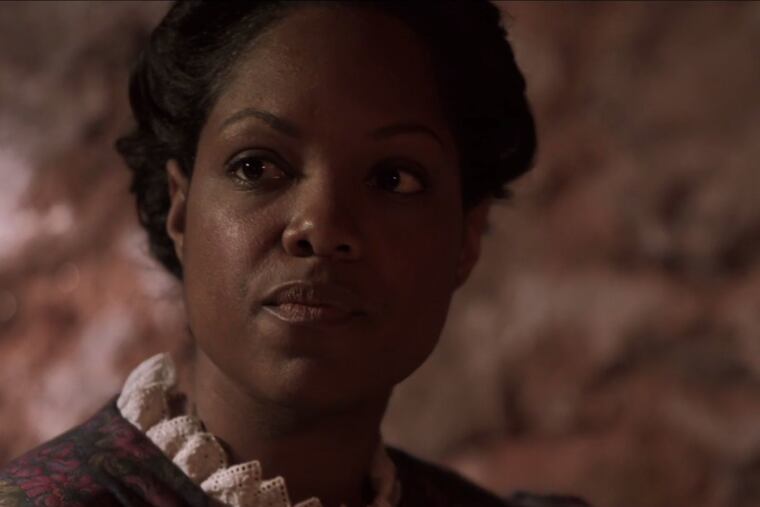‘Sisters in Freedom,’ the story of black and white female Philadelphia abolitionists
“They were so consequential in moving the national debate toward the abolition of slavery,” said Andrew Ferrett, a co-director of the film, which has its next screening Thursday.

What stories do people know most about Philadelphia? Benjamin Franklin as a founding father? Thomas Jefferson writing the Declaration of Independence? Rocky atop the steps of the art museum?
Usually, the historical stories — and even the famous fictional ones — feature men as the central focus.
The documentary Sisters in Freedom however, tells lesser-known stories of Philadelphia female abolitionists — black and white — who worked to end slavery in the face of fierce opposition, even to the idea of women speaking in public.
“They were so consequential in moving the national debate toward the abolition of slavery,” said Andrew Ferrett, a co-director of the film, which has its next screening Thursday. “We wanted to make a dedicated film about women’s history in Philadelphia.”
These Philadelphia women, among the first in the nation to form an interracial, women’s anti-slavery society, included Sarah Mapps Douglass, Charlotte Forten and her daughter Harriet Forten Purvis — free, middle-class African American activists and feminists — and Lucretia Mott, Angelina Grimké Weld, and her sister Sarah Moore Grimke, who were white Quaker feminists. All encountered racist violence and threats as they organized for the cause.
At a screening last month at the Lucien Blackwell library branch in West Philadelphia, social worker Valerie Anderson showed selected clips to a dozen children after school.
One 14-year-old student said he had never heard the word abolitionist before. Caden Penn, 10, a fifth-grader at Hardy Williams Mastery Charter School, said learning about female activists was interesting.
“They went door to door, getting people to sign petitions to stop slavery,” Caden said.
Women formed the Philadelphia Female Anti-Slavery Society on Dec. 9, 1833, three days after the male-dominated American Anti-Slavery Society made clear at its first meeting that women would not have leadership roles.
The women wrote letters and published articles denouncing slavery. They shocked proper society by speaking in public and asking strangers to sign their petitions. They angered Congress by flooding it with so many petitions that legislators instituted a gag rule to table any petitions against slavery without discussion.
At the library, many younger children didn’t understand the timeline of the fight for freedom from slavery, Anderson said.
“They don’t have a sense of this period,” she said. “Their knowledge of black history fast-forwards to Rosa Parks and Martin Luther King Jr.”
At another screening, a teenage student told Anderson she knew about abolitionists — but not that blacks and whites worked together to fight against slavery.
“She said she’d learned black history, but not this history," Anderson said. "She seemed in awe and said, ‘I don’t know anything about this. Why don’t they teach us about this in school?' "
Amy Cohen, educational director of History Making Productions, which produced the film, noted that it’s not only children who haven’t learned these stories. Many people, for instance, have never heard of the burning of Pennsylvania Hall, she said.
By 1838, many of the abolitionist groups joined together to form the Pennsylvania Anti-Slavery Society, and they needed a place to hold meetings and lectures. The building near Sixth and Race was funded with money the group raised.
Three days after it opened on May 14, 1838, after Angelina Grimké Weld had spoken about the beatings and brutality she had witnessed in the South that day, the building was was burned down at night by a mob of white Philadelphians upset about an integrated group of men and women meeting together. The film notes that people in the North, as well as banking and textile industries, profited from slavery.
“People don’t learn that there was slavery here,” Cohen said. “They learn the Underground Railroad was here, not that there was slavery."
The film starts with the story of Ona Judge, an enslaved young woman who ran away in 1796 from George Washington’s President’s House at Sixth and Market, more than 30 years before the women’s anti-slavery society began.
The film describes how Judge, portrayed by actor Niya Colbert, could shop in markets where she saw free black people selling pepper pot soup and oysters or watch the construction of Mother Bethel AME Church.
“Ona Judge can taste her freedom," the narrator says, “but the president stands in the way.”
Eventually, Judge fled Philadelphia on a ship bound for Portsmouth, N.H. She later told a newspaper that as George and Martha Washington were packing to leave as his presidential term was nearing its end, Judge packed her belongings, too.
“I may have been born a slave, but I am determined not to die a slave,” Judge said.
“Sisters in Freedom” will be screened at 11:30 a.m. Thursday at Community College of Philadelphia, Center for Business and Industry, Room C2-28, 1751 Callowhill St.
At 7 p.m. Thursday, the Woodmere Art Museum, 9201 Germantown Ave., will show the film in conjunction with the exhibit “Freedom’s Journal: The Art of Jerry Pinkney.” The art includes watercolors Pinckney painted to illustrate a National Geographic article by Charles L. Blockson about the Underground Railroad.